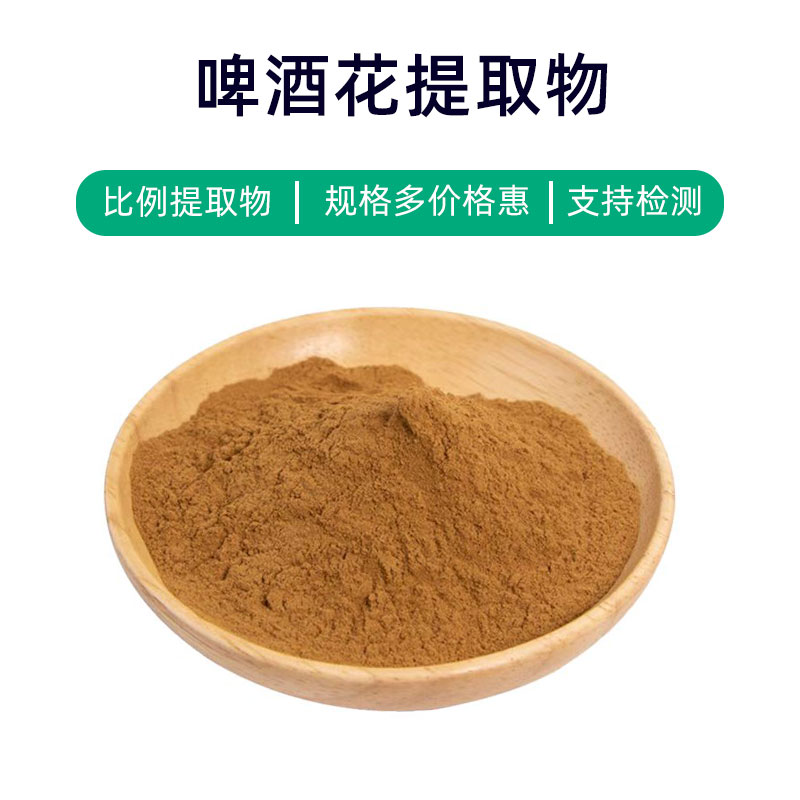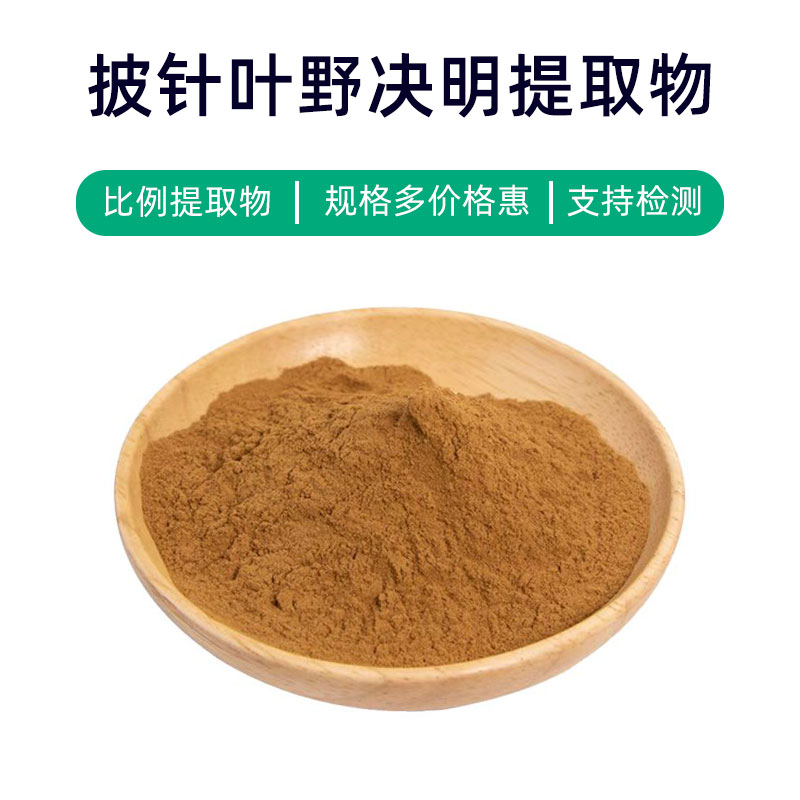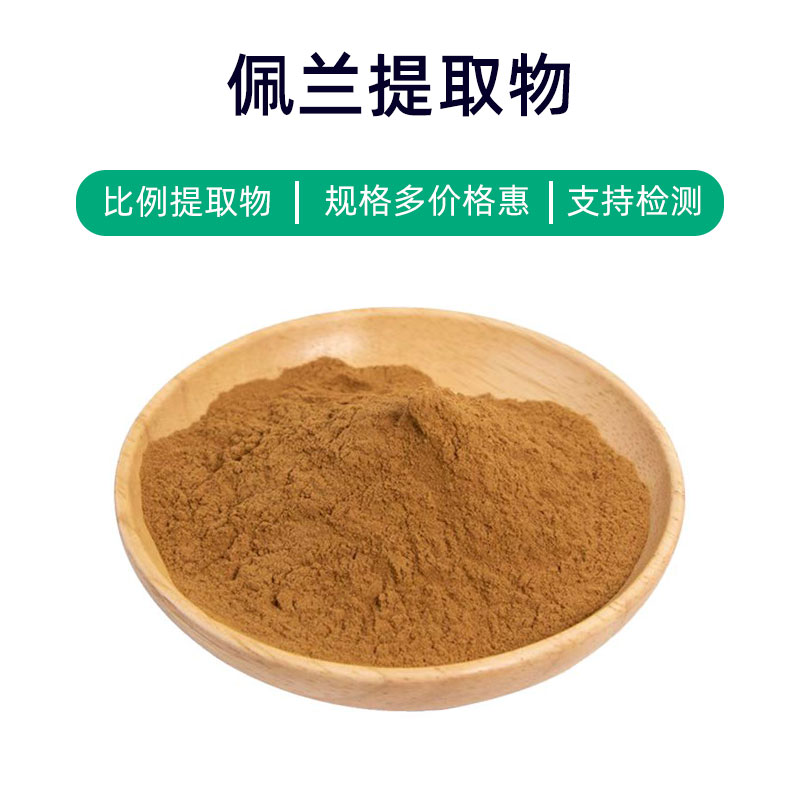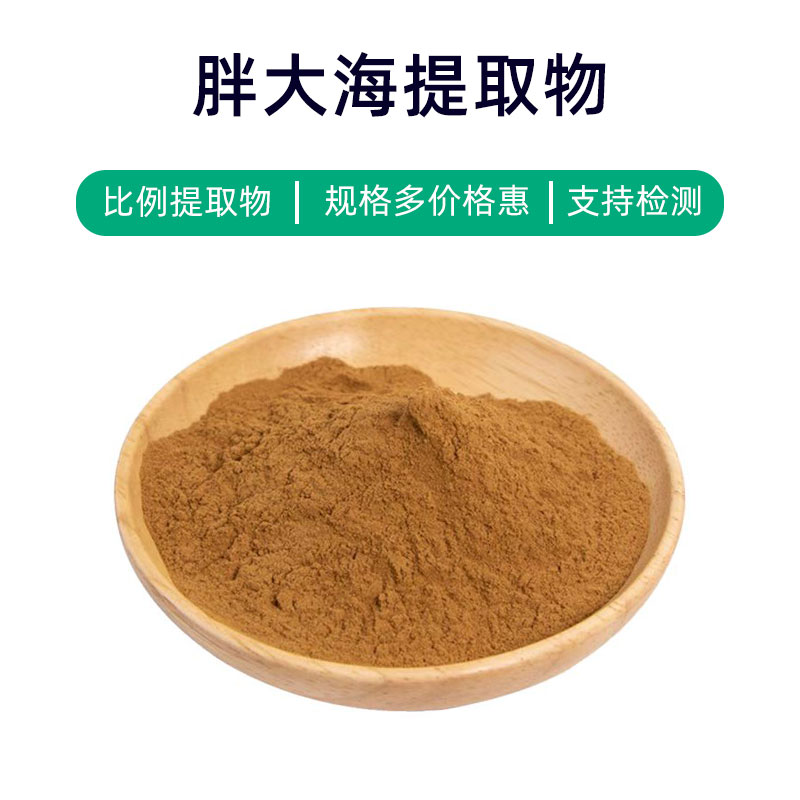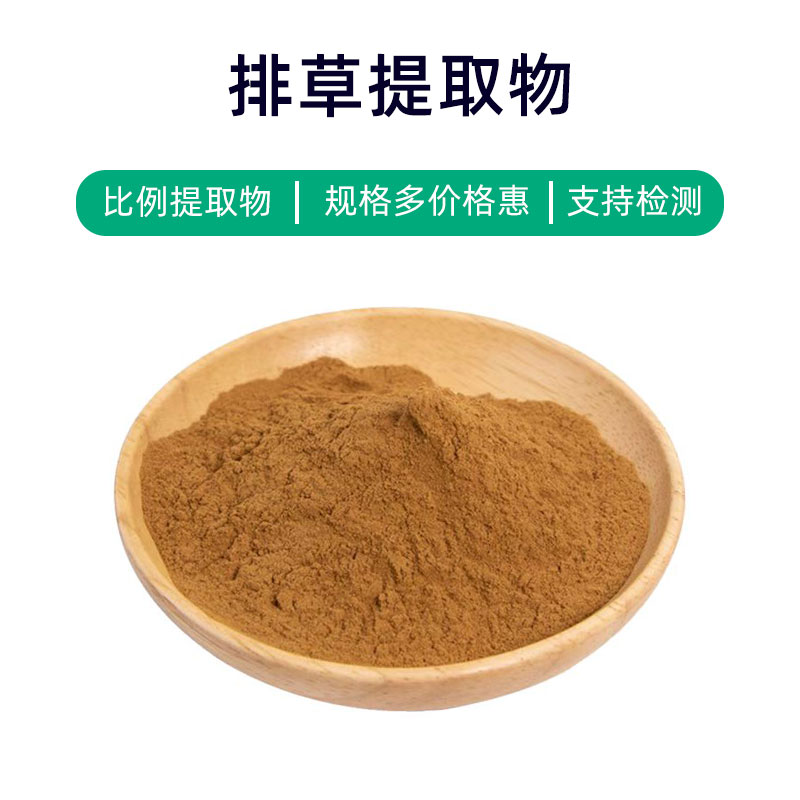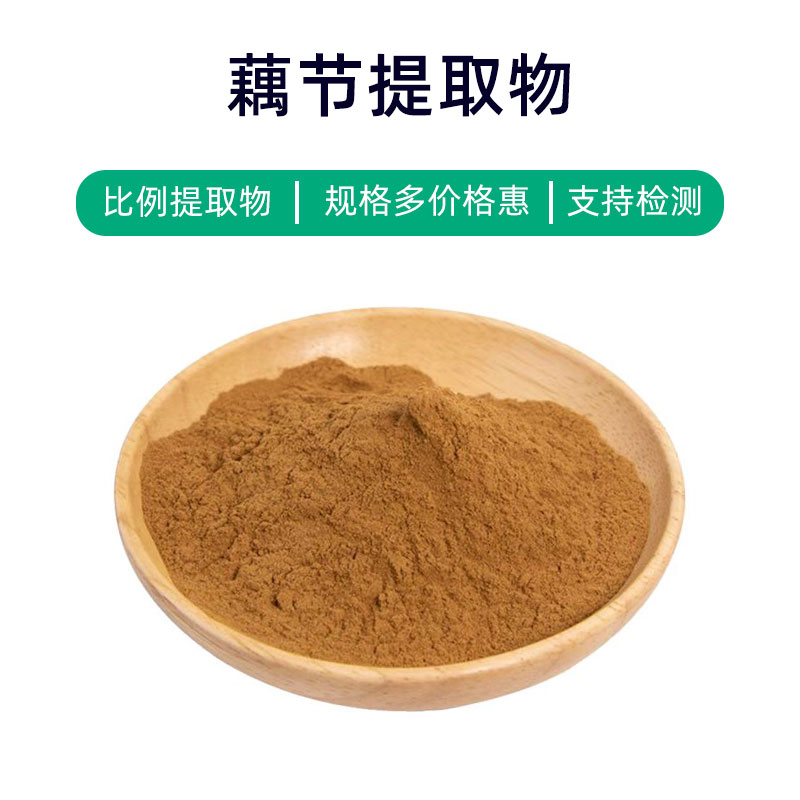Fructus Xanthii Extract Product Introduction
Fructus Xanthii Extract is a natural plant extract derived from the fruit of the Xanthium plant. Its main ingredients include flavonoids, volatile oils, and other active components, making it a common choice in the fields of medicine, dietary supplements, and cosmetics.
In medicine, Fructus Xanthii Extract is recognized for its anti-inflammatory, antioxidant, and antibacterial effects. Flavonoids help alleviate inflammation and protect cells from oxidative stress. Volatile oils exhibit antibacterial properties that can help inhibit the growth of bacteria and fungi, aiding in the treatment of skin inflammation and infections.
In dietary supplements, Fructus Xanthii Extract is often used as a natural herbal additive. Its antioxidant and anti-inflammatory effects support immune function, improve skin health, and reduce fatigue and stress.
In cosmetics, Fructus Xanthii Extract is frequently added to skincare and anti-aging products. Its antioxidant benefits can help slow down the skin aging process, reducing the appearance of fine lines and wrinkles, and promoting youthful, healthy skin.
Overall, Fructus Xanthii Extract offers numerous health benefits and can be applied as a natural herbal ingredient in medicine, dietary supplements, and cosmetics, contributing to health and beauty.
Fructus Xanthii Extract Production Process
The production process of Fructus Xanthii Extract generally includes the following steps:
- Raw Material Collection: First, fresh, dried Xanthium fruits are selected as the raw material for extraction. These fruits should have good quality and maturity to ensure the extract's quality and efficacy.
- Cleaning: Collected fruits need to be washed and cleaned to remove surface impurities, dirt, and other contaminants, ensuring hygiene and safety during the extraction process.
- Crushing and Grinding: The cleaned fruits are crushed and ground to increase extraction efficiency and the surface area for extraction, typically using mechanical grinding or micronization technologies.
- Extraction Process: The crushed fruits undergo extraction using methods such as water extraction, alcohol extraction, or supercritical fluid extraction to extract active components like flavonoids and volatile oils from the fruit.
- Concentration and Purification: The resulting solution from extraction undergoes concentration and purification to remove impurities and solvent residues, resulting in high-purity Fructus Xanthii Extract.
- Drying: Finally, the extract is dried and converted into a powder or granular form for packaging, storage, and usage.
- Testing and Quality Control: Throughout the production process, strict testing and quality control measures are taken to ensure the extract meets relevant standards and regulations, guaranteeing product safety and effectiveness.
- Packaging and Storage: The extract is packaged and stored in a moisture-proof, light-proof, and sealed manner to ensure stability and long-term preservation.
Effects and Side Effects of Fructus Xanthii Extract
Fructus Xanthii Extract is a commonly used herbal extract with various beneficial effects, including:
- Antioxidant Effects: Rich in active components such as flavonoids and volatile oils, it has significant antioxidant properties, capable of eliminating free radicals in the body and protecting cells from oxidative damage, thereby delaying aging.
- Anti-inflammatory Effects: The flavonoids in the extract exhibit anti-inflammatory effects, inhibiting the release of inflammatory mediators and alleviating inflammatory responses, which can be beneficial for inflammatory diseases.
- Antibacterial Effects: The extract can inhibit various bacteria, fungi, and viruses, helping to prevent and treat related infectious diseases.
- Hepatoprotective Effects: Active components in the extract promote liver cell regeneration and repair, enhance liver function, and help protect liver health, preventing the occurrence and progression of liver diseases.
- Blood Sugar Regulation: Studies indicate that it has a certain blood sugar-lowering effect, promoting insulin secretion and utilization, helping regulate blood sugar levels, and aiding in diabetes prevention and treatment.
- Digestive Support: The volatile oils in the extract enhance the secretion of digestive juices and intestinal motility, improving digestive function and alleviating discomfort related to indigestion.
- Tumor Inhibition: Some studies show that active components in the extract may inhibit the proliferation and metastasis of certain tumor cells, indicating potential anti-tumor properties.
Despite its many beneficial effects, caution is needed to avoid possible side effects and safety issues. Long-term or high-dose use may lead to gastrointestinal discomfort or allergic reactions. Therefore, it is advisable to follow medical advice before use, particularly for special populations such as pregnant or nursing women and those with specific chronic diseases.
Application Scenarios and Dosage of Fructus Xanthii Extract
Fructus Xanthii Extract has broad applications in medicine, food, and cosmetics. Below are its main application scenarios and recommended dosages:
- In Medicine:
- Application Scenarios: Primarily used to prepare traditional Chinese medicine prescriptions and formulations for treating digestive system diseases, liver diseases, and inflammation.
- Dosage: Common methods of administration include oral or topical use, or formulating into decoctions or granules. Dosage is usually determined based on physician recommendations or product guidelines.
- In Food:
- Application Scenarios: Commonly used as a food additive to enhance flavor, color, and preservation, especially in processed meats and sauces.
- Dosage: Dosage varies based on the type of food and recipe requirements, generally added according to production standards and sanitary regulations.
- In Cosmetics:
- Application Scenarios: Often included in skincare products such as creams, lotions, and masks, mainly for moisturizing, antioxidant, and calming effects.
- Dosage: Determined based on the formulation ratios in cosmetics, generally following product instructions or formulation requirements.
Overall, the application methods and dosages of Fructus Xanthii Extract vary across different fields. It's crucial to read product guidelines carefully or consult professionals before use to ensure safety and effectiveness, particularly for specific groups such as children and pregnant women.
Introduction to the Source Plant of Fructus Xanthii, Distribution, and Growth Environment
Xanthium, scientifically known as Rhus chinensis Mill., is a common woody plant belonging to the Anacardiaceae family, also known as Chinese lacquer tree. Below is an overview of its source plant, distribution, and growth environment.
- Source Plant:
Xanthium is a tree-like plant that typically reaches heights of about 10 meters. Its crown is round or oval shaped, with grayish-white or light gray bark, a well-branched structure, and feathery compound leaves with 5-7 leaflets that are oval or elliptical, glossy, and deep green. It flowers in spring, producing small yellow-green flowers arranged in conical clusters, which together create a stunning display. The fruit is a small red berry that is rich in anthocyanins and tannins when mature. - Distribution:
Xanthium is native to China and is primarily distributed across North China, East China, Central China, and the regions south of the Yangtze River, including Shandong, Jiangsu, Anhui, Zhejiang, Jiangxi, Fujian, Hubei, Hunan, Guangdong, and Guangxi provinces. - Growth Environment:
It thrives in warm, humid environments, preferring sunny locations with good drainage. The plant has flexible soil requirements but favors loose, fertile loam. It adapts well to a variety of environments, including hills, mountains, valleys, riverbanks, and roadsides, often found on slopes, by streams, along forest edges, and near fields and villages.
Xanthium holds significant economic and medicinal value in China. It serves not only as an ornamental plant but also has medicinal, edible, and artisanal uses. Its fruits and bark are utilized in traditional medicine for treating symptoms like indigestion, diarrhea, and abdominal bloating, boasting properties such as heat-clearing, detoxifying, astringent, and analgesic effects. Furthermore, it is also used in landscaping to enhance both the aesthetic appeal of surroundings and improve environmental quality.
Processing and Storage of Fructus Xanthii Extract
The processing of Fructus Xanthii Extract typically involves the following steps: First, freshly harvested Xanthium is cleaned and impurities removed, then sun-dried. The dried Xanthium is crushed or ground to facilitate the extraction of active components. This is followed by extraction using appropriate solvents, utilizing methods such as maceration or supercritical fluid extraction. Finally, the extracted liquid undergoes concentration and drying to yield Fructus Xanthii Extract.
For storage, Fructus Xanthii Extract should be kept in a cool, dry, and well-ventilated place, away from direct sunlight and high temperatures. To prevent moisture and contamination, it can be stored in airtight containers to minimize exposure to air. Regular checks of the extract during storage are advisable to ensure its quality and stability, and any abnormalities should be addressed promptly.
Monica Sun is a seasoned expert in the plant extraction industry with over a decade of experience in research and production. She specializes in the extraction and purification of plant active ingredients, focusing on driving innovation in natural product applications. Monica has participated in the development of multiple functional plant extracts, delivering high-value natural raw material solutions for the health food, pharmaceutical, and dietary supplement sectors.









